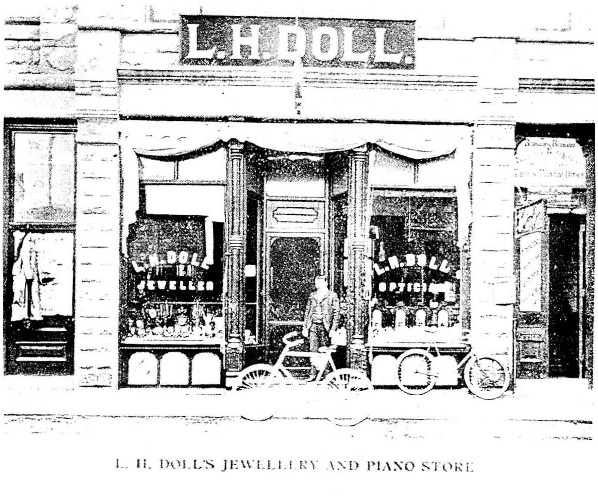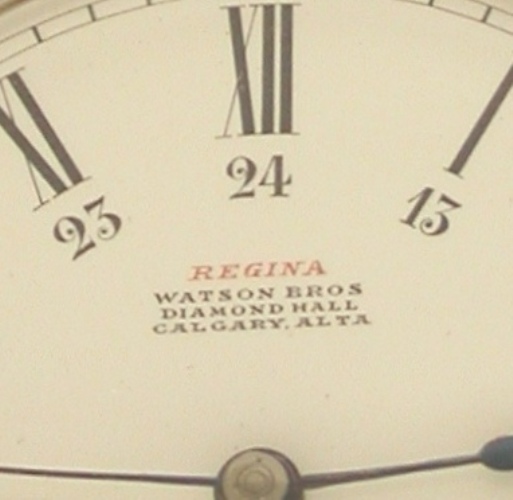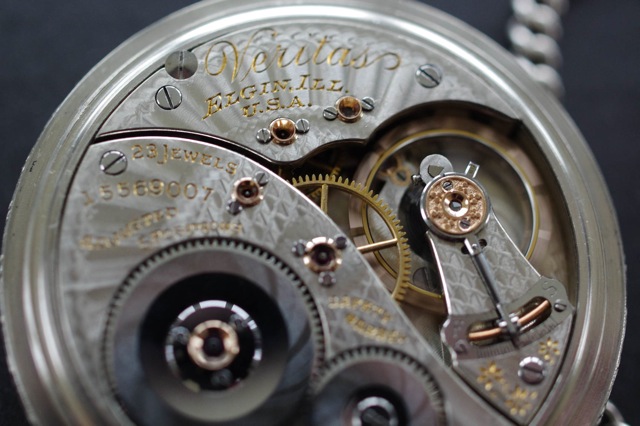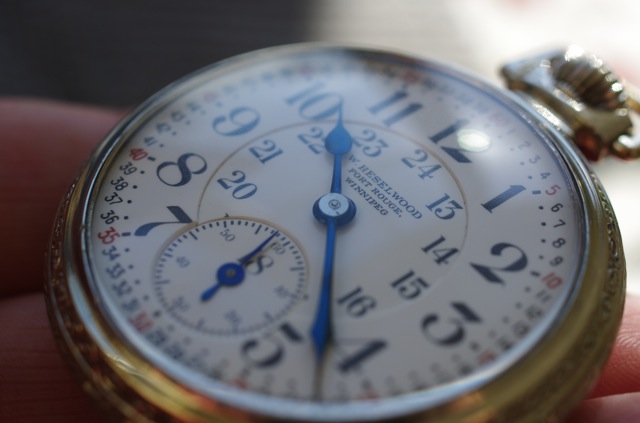
| WWT Shows | CLICK TO: Join and Support Internet Horology Club 185™ | IHC185™ Forums |

|
• Check Out Our... • • TWO Book Offer! • |
Welcome Aboard IHC185™  Internet Horology Club 185
Internet Horology Club 185  IHC185™ Discussion Site Main Page
IHC185™ Discussion Site Main Page  Our Exclusive "Timekeepers Photo Gallery"
Our Exclusive "Timekeepers Photo Gallery"  IHC185™ "Timekeepers Photo Gallery"
IHC185™ "Timekeepers Photo Gallery"  CANADIAN Private-Label Watches
CANADIAN Private-Label Watches
 Internet Horology Club 185
Internet Horology Club 185  IHC185™ Discussion Site Main Page
IHC185™ Discussion Site Main Page  Our Exclusive "Timekeepers Photo Gallery"
Our Exclusive "Timekeepers Photo Gallery"  IHC185™ "Timekeepers Photo Gallery"
IHC185™ "Timekeepers Photo Gallery"  CANADIAN Private-Label Watches
CANADIAN Private-Label WatchesRelated Content: Larry Buchan's ..."Tales from the Rails"
Go  | New Topic  | Find-Or-Search  | Notify  | Tools  | Reply to Post  |  |
| Railway Historian IHC Life Member Site Moderator |
The movement Elgin 18 size, 23 jewel, Veritas, Serial No. 11820044 Manufactured circa 1905 which would be correct for the dial marked "Alta" as 1905 was the year Alberto became a province of Canada.  | |||
| Railway Historian IHC Life Member Site Moderator |
Close-up of the Elgin Veritas movement.  | |||
| Railway Historian IHC Life Member Site Moderator |
Case back.  | |||
| Railway Historian IHC Life Member Site Moderator |
Case inside back  | |||
| Railway Historian IHC Life Member Site Moderator |
Case trademark  | |||
| Railway Historian IHC Life Member Site Moderator |
Louis Henry Doll's first store in Calgary, he later went on to build Doll's Diamond Palace, a three-story red brick and sandstone building that still stands in Calgary today, DH Black apprenticed for LH Doll and bought him out when he had a nervous breakdown and ended up spending the rest of his days in the Bowden sanitarium North of Calgary.  | |||
| Railway Historian IHC Life Member Site Moderator |
Another Canadian private-label from Calgary, Watson Brothers were located one block west Of LH Doll on 8th Avenue west of Center Street there are many other posts on this thread from Watson Brothers. Here is a photo of the dial.  | |||
| Railway Historian IHC Life Member Site Moderator |
Another view of the dial marked Regina (Omega) in red, and Watson Bros, Diamond Hall, Calgary Alta, in black.  | |||
| Railway Historian IHC Life Member Site Moderator |
Movement marked Watson Bros. Calgary, Alta, 17 JEWELS, Serial No. 2915187 manufactured after 1905 as its marked "Alta".  | |||
| Railway Historian IHC Life Member Site Moderator |
Movement close-up  | |||
| Railway Historian IHC Life Member Site Moderator |
Yellow gold filled Hunter case made by Banner that was from PL Ellis, Toronto, Ontario.  | |||
| Railway Historian IHC Life Member Site Moderator |
Calgary depot circa 1949. Here is a painting by famous railway artist Max Jacquard it is a busy scene of Calgary's downtown depot circa 1949, and is taken from the 1st Street West railway underpass looking eastward, the building beside the steam locomotive is the CPR's Palliser Hotel, and it fronts onto 9th Avenue, the sandstone Depot fronts onto 9th Avenue & Center Street, it was built during World War I, on the right-hand side you can see a smokestack where the CPR had a powerhouse in steam operated laundry to provide fresh linens for the hotel, and for passenger service, in Depot 1 next to the hotel is a westbound passenger train powered by a CPR 5900 Selkirk steam locomotive, these locomotives had a wheel arrangement of 4-10-2, and they were the largest steam locomotives in the British Commonwealth, and the last ones to be built by the Montréal Locomotive Works in 1949, they were used exclusively for powering passenger and freight trains between Calgary and Revelstoke BC, where they needed the horsepower to cross the Continental divide between Alberta and British Columbia, and the Selkirk range of mountains in the Rogers Pass in British Columbia. In Depot 2 is a eastbound passenger train, and the freight train running down the lead towards the powerhouse is a freight train arriving from Field BC with its crew comfortably in the caboose in this winter scene, they are on their way into the large Alyth freight yard 2 miles to the east. I remember growing up going into the station to meet relatives or friends arriving, the whole scene was changed drastically in 1968, the CPR Realty wanted to expand their retail space in this prime location, the sandstone station was razed with their wreckers ball, and construction of a 635 feet concrete tower was started, it was named the Husky Tower after one of the large oil companies in the city, and a commercial retail mall, and offices were built, with a parking structure that went across the railway tracks, the laundry and powerhouse were torn down, and I was there firsthand to witness it as I was working as a pipe fitter apprentice for Trotter and Morten who had all the plumbing and mechanical contracts for the structures, most of the Railway Watch Inspectors were on 8th Avenue a block over to the left of this view.  | |||
| Railway Historian IHC Life Member Site Moderator |
How it looked in 1968 you can see The Canadian No1 ready to depart westward from Depot 1 behind the Palliser Hotel, to the right of the hotel, you can see the base of the Husky Tower, a 635 feet structure with a rotating restaurant and observation deck on the top, this replaced the sandstone station, and over the tracks, a car parking building was constructed in the winter of 1968, I worked on this project with Trotter and Morten Plumbing and Heating, as an apprentice, hooking up natural gas unit heaters up into the plastic shrouded wooden forms that encapsulated the structure so cement could be poured in the cold Alberta winter climate.  | |||
| IHC Member 1856 |
Here's another from Winnipeg. Heads  | |||
| IHC Member 1856 |
Tails. I have never seen a B of LE case. A local job surely.  | |||
| IHC Member 1856 |
The middle  | |||
| IHC Member 1856 |
Glamour shot  | |||
What a beauty - Geary!!! Just love the dial - WoW!!! | ||||
| Railway Historian IHC Life Member Site Moderator |
Nice Elgin, private-label from Winnipeg Geary! . The only comparable example on this thread is on Page 22, it is a Elgin Veritas in a Elgin RR, yellow gold filled case, this one was manufactured in 1922, while yours is from 1910. I'd be interested in seeing a photo of the inside case back to see who the manufacturer was. I am researching and will post more information on Fort Rouge.  | |||
| Railway Historian IHC Life Member Site Moderator |
Fort Rouge is a district of Winnipeg, Manitoba, located in the south-central part of the city. The district was named after Fort Rouge, a fort built on the Assiniboine River in the 1730s. Prior to 1880 the area consisted of a few small farms, bridges were built across the Assiniboine River to connect it with the city of Winnipeg, it became a middle-class residential area with most residents of British Canadian backgrounds. The Canadian Northern Railway chose to locate its railway shops and yards in the district. The aerial photograph. I've attached you can see the roundhouse, and yard, and the left hand top corner.  | |||
| IHC Member 1856 |
Great to see you back Larry and a beautiful Veritas. I used to spend a lot of time in Winnipeg, I will have some exploring to do next time. The BLE case is a Philadelphia Victory. A little dark here.  | |||
| Powered by Social Strata | Page 1 ... 38 39 40 41 42 43 44 ... 52 |
| Your request is being processed... |
|
©2002-2025 Internet Horology Club 185™ - Lindell V. Riddle President - All Rights Reserved Worldwide


